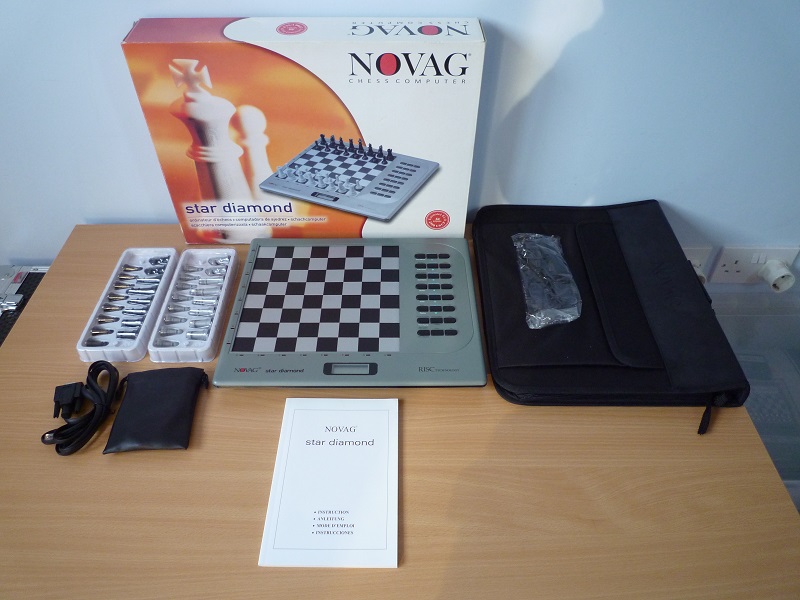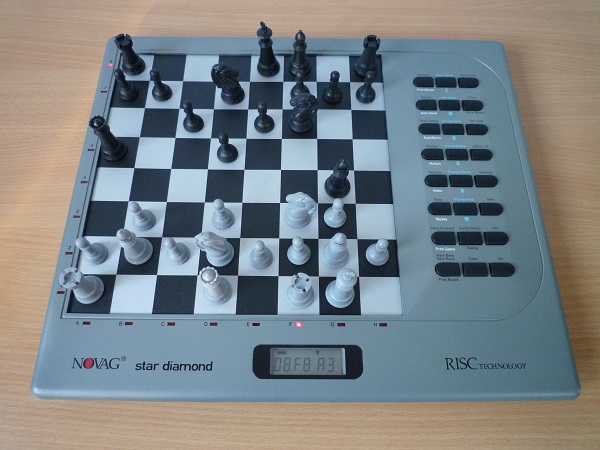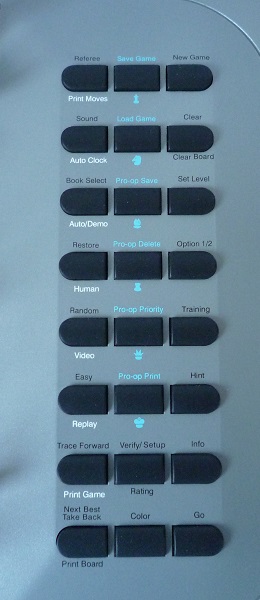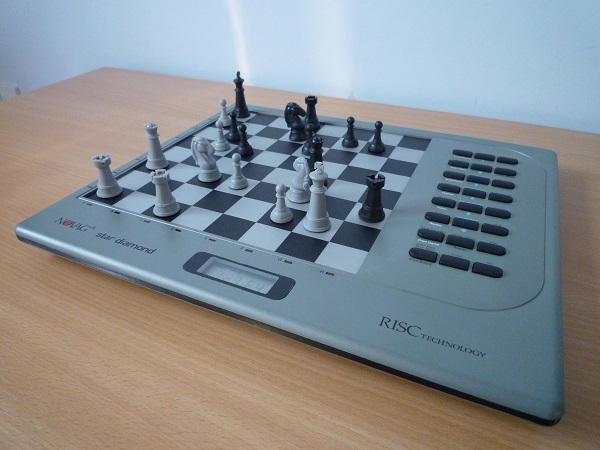|
As the chess computer market shrank through the 1990s the number of new models began to dry up and there was a cloud over the industry which even threatened the remaining major players Saitek/Mephisto and Novag. By 1999
there were vague rumours that Novag might be closing down but these were entirely dispelled by an announcement made in Spring 2000. It was then that the original owner of Novag, Peter Auge stepped down and his daughter Jeannine Auge took over the business, now to be called Perfect Technology Ltd. Their senior engineer Wayne Chow and David Kittinger their chess programmer stayed with the new company.
At the same time indications were given of a whole range of new products including these chess computers - Granite, Beryl, Quartz, Star Diamond, Star Sapphire and Star Ruby. In Selective Search 87 an enthusiastic and relieved Eric Hallsworth gave a brief description of these machines including a photo of the Star Sapphire. There were tentative prices and a hope for releases in June. The Star Diamond and Star Sapphire were of particular interest because they were said to be about 120 Elo stronger than the Diamond 2/Sapphire 2, the models they were intended to replace. So it was hoped they would be in the 2280-2300 Elo range and worthy of a top 10 position in the Rating List at a much lower price (£249?) than any of the other strongest chess computers. The Star Sapphire was of special interest, destined to become by far the strongest portable yet, and very well specified with an apparently excellent touch screen, judging from the photograph. So these Novag models were much anticipated.
Well nothing happened for another year and a half, until late in 2001, when the Granite, Beryl and Quartz arrived. Release of the Star Diamond and Star Sapphire was said to be imminent.
Again, time passed, and there was no sign of the Star Diamond or Star Sapphire. A press release eventually announced their production in Spring 2003 and Selective Search gave its first impressions of the Star Diamond in the June/July issue. Eric Hallsworth praised the quality of the board, the inclusion of a carry case, the low price (£199) and also the anticipated 2200+ Elo strength based on very early testing.
Looking back it seems likely that the Star Diamond was held back by indecision caused by the shrinking market for high-end machines, followed by belated re-engineering to cut hardware costs. The Star Sapphire eventually appeared with a cheaper, much less acceptable screen and the Star Diamond was released with a less powerful processor, less ROM and a smaller opening book. The Star Diamond manual is dated 2002 and the Technical Data it gives is of the higher specification originally intended, rather than what is actually in the machine. It lists a SH7020 RISC processor, 1 MB ROM and a 200,000+ ply opening book. So this switch to a lower specification must have been a late decision. The box is dated 2003 and correctly refers to the smaller 123,000 position opening book.
In a detailed review (Selective Search Apr / May 2004) based on a large number of games and test positions Alvaro Benlloch concluded that the Star Diamond is tactically very strong, but unpredictable with some positions solved much quicker than comparable machines and some much slower. He found that the selective search algorithm interferes with tactics easily found when the Star Diamond is switched to a brute force search. He also found the Star Diamond to have more positional knowledge than previous Kittinger programs and a tendency to castle long, which helps make it a more enjoyable and aggressive opponent. It also has good capture, check and king attack extensions, he said.
It will be interesting to see if the Strong Group Two games confirm these conclusions.
|



